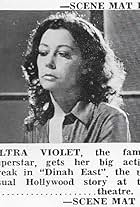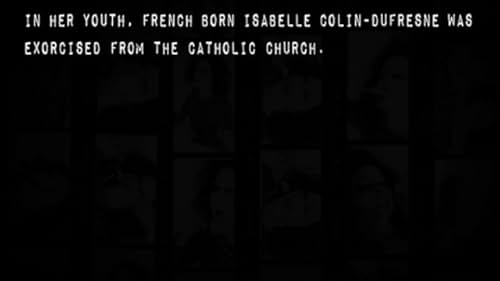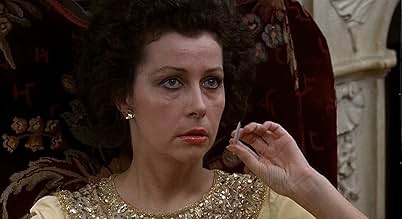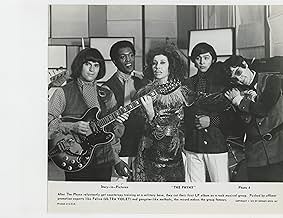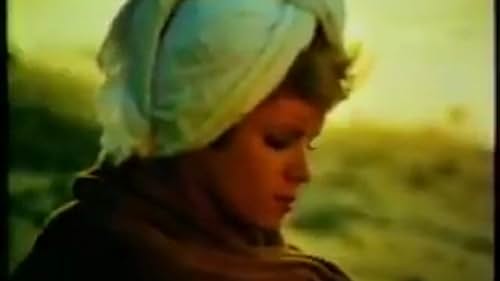Ultra Violet(1935-2014)
- Actress
- Writer
- Producer
The noted outré underground celebrity Ultra Violet was born Isabelle Collin Dufresne on September 6, 1935, and a convent-raised French bourgeois heiress. A coiffured society deb in those days, she moved to New York in 1953 where she spent a decade surrounding herself with modernist artists like John D. Graham, John Chamberlain, and Salvador Dalí, the last of whom triggered her career as a painter.
It was through her relationship with Dali that she eventually met pop icon Andy Warhol in the early 1960's and changed her name to Ultra Violet, evolving into one of Warhol's more accessible and unforgettable trashy-chic East 47th Street "Factory" superstars. An exotic vamp in style and attitude, Ultra Violet seemed to pick up quite a bit of makeup tips from silent star Theda Bara and made her Warhol debut with The Life of Juanita Castro (1965) and went on to appear next in Warhol's I a Man (1967) before her cameo inclusions in other counterculture cult films such as the odd Norman Mailer film Maidstone (1970) and The Secret Life of Hernando Cortez (1969).
Ultra Violet made her legit film debut playing herself as a decadent party guest in the Oscar-wining x-rated film Midnight Cowboy (1969), and went on to offer a flash of weirdness in such bizarre, offbeat films as The Phynx (1970), Dinah East (1970) (starring Jeremy Stockwell as a 50's movie queen who is actually a man), Simon, King of the Witches (1971) (as a high priestess), The Telephone Book (1971) (as a whip lady), Curse of the Headless Horseman (1972) (as a Countess), Savages (1972), Bad Charleston Charlie (1973) and a New York character named Lady MacBeth in the Jill Clayburgh drama An Unmarried Woman (1978).
Her best-selling 1988 autobiography "Famous for Fifteen Minutes: My Years with Andy Warhol" detailed her rise in celebrity, and her play "You Are What You Eat" was performed in Czechoslovakia in 1992. She also appeared several Warhol documentaries, including Superstar: The Life and Times of Andy Warhol (1990) and Andy Warhol's Factory People (2008).
As a visual artist with political and spiritual overtones, her mixed-media works have been displayed worldwide. She opened an art studio in Nice in 1990, creating a movement called "L'Ultratique," publishing two manifestos in the early 1990's. Her work was included in the Audart exhibition that commemorated the tenth anniversary of Warhol's death.
In 1973, suffering from acute depression, the lilac-haired Ultra Violet had a reawakening after a near-death experience. In the 1980's renounced her excessive lifestyle and became a disciple of The Church of Jesus Christ of Latter-day Saints, which she practiced for the rest of her life. Slowly parting ways from the Factory scene, she, as such, took a more independent focus on her art. A bi-continental resident, Ultra Violet divided her time in later years between her studio in Nice and her penthouse apartment in Manhattan.
Diagnosed with cancer, her last New York exhibition entitled "Ultra Violet: The Studio Recreated" occurred at the Dillon Gallery in Chelsea. A few weeks later, the 78-year-old NYC artist died on June 14, 2014. She was taken back to her homeland and buried in France.
It was through her relationship with Dali that she eventually met pop icon Andy Warhol in the early 1960's and changed her name to Ultra Violet, evolving into one of Warhol's more accessible and unforgettable trashy-chic East 47th Street "Factory" superstars. An exotic vamp in style and attitude, Ultra Violet seemed to pick up quite a bit of makeup tips from silent star Theda Bara and made her Warhol debut with The Life of Juanita Castro (1965) and went on to appear next in Warhol's I a Man (1967) before her cameo inclusions in other counterculture cult films such as the odd Norman Mailer film Maidstone (1970) and The Secret Life of Hernando Cortez (1969).
Ultra Violet made her legit film debut playing herself as a decadent party guest in the Oscar-wining x-rated film Midnight Cowboy (1969), and went on to offer a flash of weirdness in such bizarre, offbeat films as The Phynx (1970), Dinah East (1970) (starring Jeremy Stockwell as a 50's movie queen who is actually a man), Simon, King of the Witches (1971) (as a high priestess), The Telephone Book (1971) (as a whip lady), Curse of the Headless Horseman (1972) (as a Countess), Savages (1972), Bad Charleston Charlie (1973) and a New York character named Lady MacBeth in the Jill Clayburgh drama An Unmarried Woman (1978).
Her best-selling 1988 autobiography "Famous for Fifteen Minutes: My Years with Andy Warhol" detailed her rise in celebrity, and her play "You Are What You Eat" was performed in Czechoslovakia in 1992. She also appeared several Warhol documentaries, including Superstar: The Life and Times of Andy Warhol (1990) and Andy Warhol's Factory People (2008).
As a visual artist with political and spiritual overtones, her mixed-media works have been displayed worldwide. She opened an art studio in Nice in 1990, creating a movement called "L'Ultratique," publishing two manifestos in the early 1990's. Her work was included in the Audart exhibition that commemorated the tenth anniversary of Warhol's death.
In 1973, suffering from acute depression, the lilac-haired Ultra Violet had a reawakening after a near-death experience. In the 1980's renounced her excessive lifestyle and became a disciple of The Church of Jesus Christ of Latter-day Saints, which she practiced for the rest of her life. Slowly parting ways from the Factory scene, she, as such, took a more independent focus on her art. A bi-continental resident, Ultra Violet divided her time in later years between her studio in Nice and her penthouse apartment in Manhattan.
Diagnosed with cancer, her last New York exhibition entitled "Ultra Violet: The Studio Recreated" occurred at the Dillon Gallery in Chelsea. A few weeks later, the 78-year-old NYC artist died on June 14, 2014. She was taken back to her homeland and buried in France.
